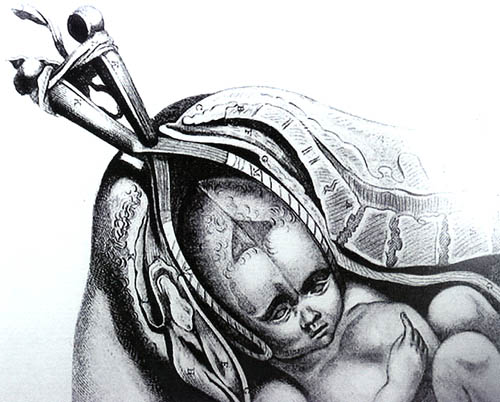The Chamberlen Family Secret
John H. Lienhard presents guest cpatters [at] uh.edu (Catherine Patterson)
Today, guest historian Cathy Patterson reveals family secrets. The University of Houston presents this series about the machines that make our civilization run, and the people whose ingenuity created them.
Childbirth is rarely easy. Before modern medicine, it was dangerous, too. Families depended on midwives who knew how to ease labor and deliver healthy babies. Skillful midwives were in high demand.
In seventeenth-century England, one family played a leading role in midwifery across several generations. The Chamberlens were unusual, for it was the men in the family who were midwives. While so-called man-midwives would become more common a century later, delivering babies remained largely women's work.
The Chamberlen patriarch, William, came to England from France as a Huguenot refugee. An apothecary, he passed his medical interests on to his sons. His elder son Peter became the most famous. Peter attended the wives of both King James I and King Charles I. He assisted in the birth of Prince Charles, later King Charles II. His nephew, another Peter, would become physician to Charles II.
Why were the Chamberlens so successful as midwives that they served royalty? Because they knew something that other midwives did not. The younger Peter Chamberlen hinted that his family had certain secrets -- possibly instruments -- that allowed them to deliver babies safely, when others could not.
Peter's son Hugh made public claims of the family secret. In a treatise on midwifery, he revealed that his family knew how to deliver a living child when the baby presented in breech position, feet first. Breech babies -- and their mothers -- often died. He claimed the Chamberlens had designed an instrument that could bring about a safe delivery.
Such an instrument might have great public benefit, but the Chamberlens saw it as proprietary. They brought it to birthing-rooms in an ornate box, hidden from view. In the 1680s, they tried, but failed, to obtain a "patent relating to midwifery" and to sell their secret information to other English practitioners. Later, Hugh apparently sold the secret instrument to doctors in the Netherlands.
What was the secret instrument? It was the obstetric forceps. This curved, two-bladed instrument is still used today in difficult births. For many years, people assumed -- but could not prove -- that the Chamberlens had invented it. Then, in 1813, a cache of Peter Chamberlen's personal medical instruments, hidden for over 100 years, was found under the attic floorboards in the family home. They included an early version of the forceps, as well as other obstetrical instruments. So the Chamberlens did, indeed, have a secret -- an instrument of their own design, that gave them an advantage over other midwives.
The obstetrical forceps was a mixed blessing. In the hands of the unskilled or overeager, it could cause more harm than good. It also helped lower the status of women midwives, who typically didn't use this would-be "professional" tool. But for the Chamberlen men, their ingenious instrument, and perhaps their midwifery skills, established their reputation in the dangerous realm of childbirth. And that family secret propelled them into the courts of kings.
I'm Cathy Patterson, at the University of Houston, where we're interested in the way inventive minds work.
Catherine Patterson is Associate Professor of History and Associate Dean of the College of Liberal Arts and Social Sciences at the University of Houston. She is author of Urban Patronage in Early modern England: Corporate Boroughs, the Landed Elite, and the Crown, 1580-1640. (Stanford: Stanford University Press, 1999)
Oxford Dictionary of National Biography, "Chamberlen Family"
W. Radcliffe, Milestones in Midwifery and The Secret Instrument. (San Francisco: Norman Publishing, 1989)
A. Wilson, The Making of Man-Midwifery: Childbirth in England, 1660-1770. (Cambridge, MA: Harvard University Press, 1995)
You can find images of a number of early obstetrical forceps at this Yale University site, though none shown here are as early as the Chamberlen model.

Early forceps delivery. (Adapted from an image on display at Old Sturbridge Village, Sturbridge MA.)